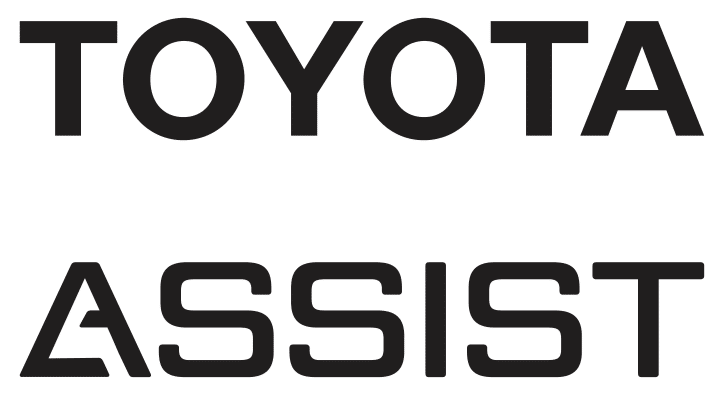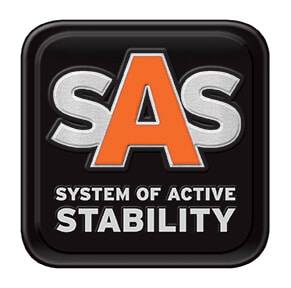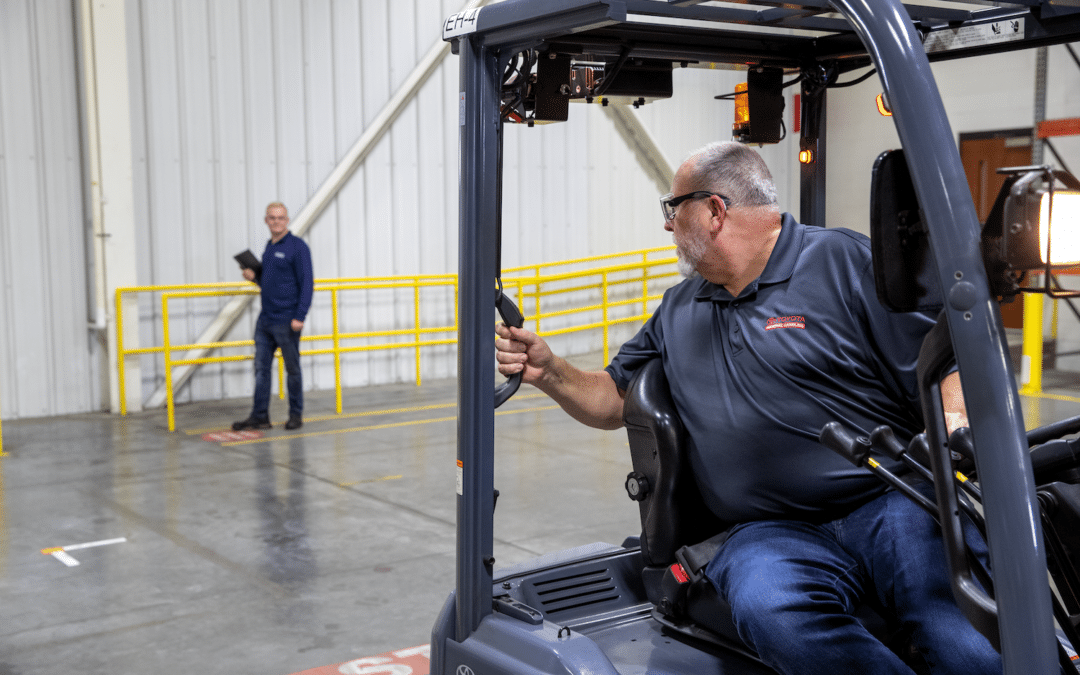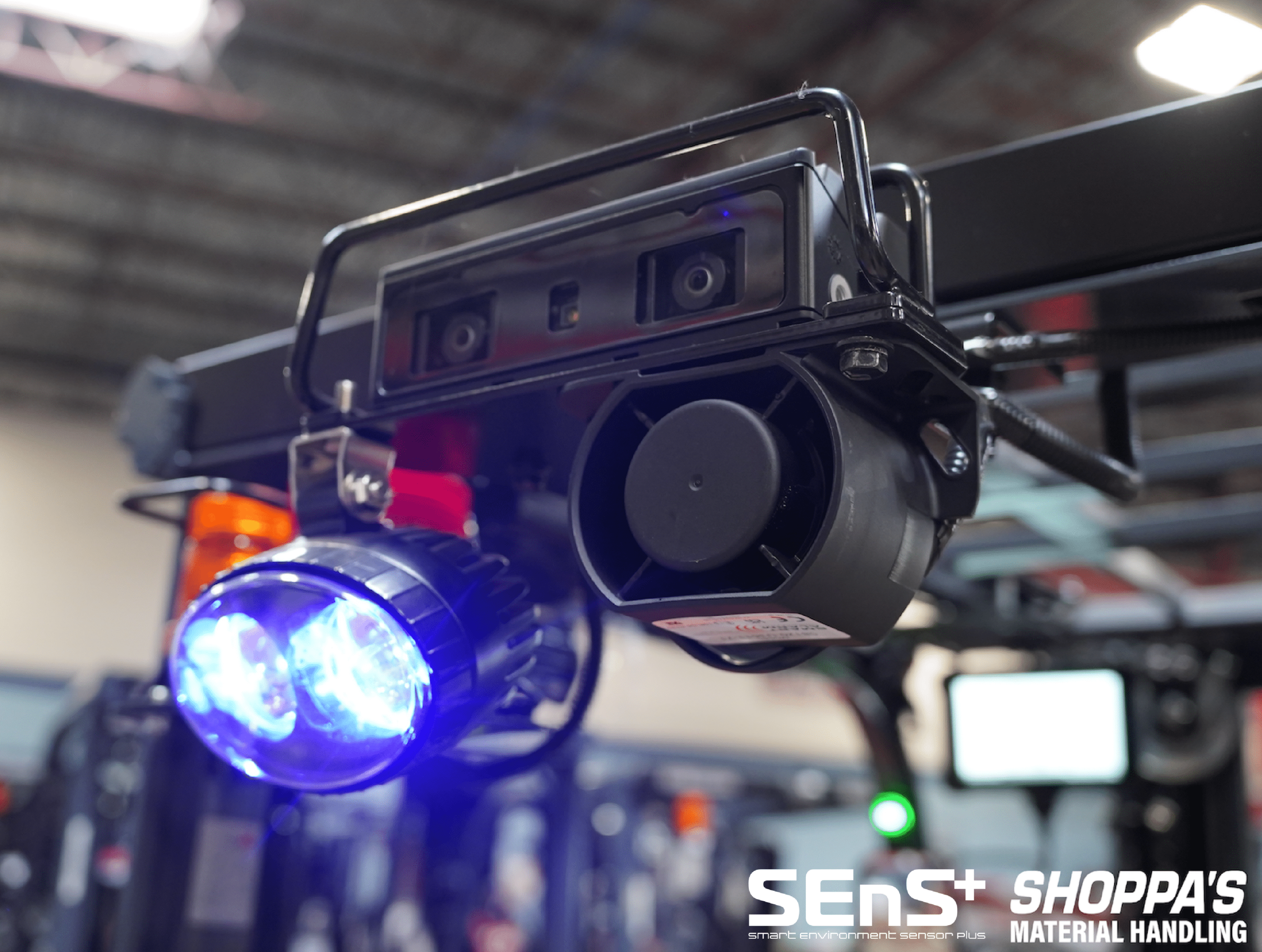Establishing and maintaining a culture of safety throughout the warehouse is crucial to your business’ day-to-day operation. Incorporating training, inspections, and planned maintenance not only keeps your employees safe, but also protects your inventory and property. Shoppa’s offers the latest technology and warehouse safety tips to help you minimize risks and losses.

Toyota ASSIST
Having a safe and highly productive warehouse means that your business needs the latest and greatest equipment technology. Toyota ASSIST is a full line of products and features that promote and sustain the safety of your team and your operation. Cameras with advanced features, SEnS and SEnS+, a 360-degree camera around the forklift, and ergonomic fingerprint & joystick controls all work together to prevent tip overs and keep your operators safe. LCD and touchscreen displays allow for workers to have full awareness of objects and people around them, as well as information about their loads throughout their shift.

Toyota System of Active Stability
Toyota’s patented System of Active Stability consists of six sensors and three actuators that automatically stabilize the forklift and load. SAS detects changes in speed, load weight, load height, mast angle, steering angle, and tilt angle, which prevents tip-overs, spills, and other common accidents.
SAS works by activating one or more of its three actuators. The active control rear stabilizer enhances forklift stability and minimizes the likelihood of tipping over. The active mast function controller prevents the load from tilting forward or backward and falling off the forks. The active steering synchronizer improves the maneuverability of the forklift and reduces operator fatigue. All these components work together to help forklift operator efficiency, and SAS requires little-to-no maintenance. The average cost of maintenance per year is around $17 and only requires 30-second checks every 250 hours.
Toyota Smart Environment Sensor (SEnS & SEnS+)
The Toyota SEnS and SEnS+ systems are smart environment sensors that detect animate and inanimate objects within the operational vicinity of the forklift. SEnS and SEnS+ supports the forklift operator with an array of notifications such as warning buzzers and lights when there is a collision risk.
The Smart Environment Sensor (SEnS) consists of 3 main features: a camera, a display, and a control that detects pedestrians & objects up to 32 feet away. This advanced safety feature recognizes the differences between people and objects, and once the unit reaches a certain range, a buzzer and indicator lights alert the operator to proceed driving with caution. The SEnS can be programed in 3 zones: near, middle, and far, which all have different and customizable warning light and sound patterns. As the forklift gets too close to an object or person, the warning buzzer sound and light frequencies will increase to alert the operator.
Similar to SEnS, the Smart Environment Sensor Plus (SEnS+) has the added feature of controlling and slowing down the forklift operator when they come too close to an object or a pedestrian. The SEnS and SEnS+ add-ons allow for operators to be more aware of their surroundings, especially behind them, during their shift.
Warehouse Safety: Most Common Challenges
When it comes to your daily operations in the warehouse, it’s important to stay diligent on following safety processes to avoid workplace injuries. Every industry and warehouse are different, as each one has their own unique safety challenges depending on the type of work and equipment. The following are general warehouse safety challenges topics that every business should consider.
Just like getting a driver’s license, all personnel are required to be trained and certified to operate a forklift. To obtain a forklift certification, operators can take an OSHA-approved course through a vocational school or local company like Shoppa’s. This training consists of classroom education and practical demonstration of the forklift(s) to be operated. Once obtained, forklift operators must be retrained. Every 3 years.
Another crucial factor to incorporate in your warehouse safety procedures are before operating a forklift daily pre-shift inspections. It’s highly recommended to keep a pre-shift checklist on hand to use before operating a forklift. This checklist can help ensure all controls are operational and the equipment in good working condition. Employees should be knowledgeable about the type of equipment they are to operate such as the make, model, size, weight, and capacity of the forklift.
Operators must maintain situational awareness of their environment. Making sure all loads are secure before moving, will help eliminate the risk of a load shifting/falling and potentially injuring an employee or damaging goods. Forklift tip-overs are commonly due to excessive speeds or traveling on slopped terrain. Always be aware of what is on the forks and how it can affect your driving. Follow all floor markings within the warehouse that indicate where forklifts can be driven. Pedestrians should remain in identified walkways and remain alert (putting away cell phones) in forklift traffic areas.
Maintenance of your forklift is another key factor that can help minimize risks to your employees and equipment. By keeping your forklift up to date with maintenance schedule, it will help avoid downtime, and identify any errors or major safety issues of the forklift.
The final defense in safeguarding your employees is the correct use of Personal Protective Equipment (PPE). By conducting a Hazard Assessment of the tasks assigned, will help identify the risks and ensure proper controls are assigned and implemented. This process is paramount to provide the proper protection to the employee as well as maintain compliance with OSHA’s PPE standard.
Warehouse Components: Racking, Dock & Door, and Automated Machines
Having secure pallet racking is imperative to the safety of your operation. Racking that is damaged can collapse, leading to heavy loads falling & tipping and damaging your building’s structural integrity. Be aware of racking weight capacity to know how much your racking can take and never exceed maximum weight. Shoppa’s racking experts can assist with repairing or replacing all of your racking components.
Docks are a common accident location in a warehouse. Personnel should never jump from the dock to the ground below. Implementation of safety guards and rails adds a clear level of protection from falling from open edges. Additionally for truck drivers and transportation workers, always make sure that the truck is secure before pulling away from the dock. Dock safety equipment like truck restraints are a great way of ensuring that the truck does not drive off or roll while an operator is loading/unloading.
There are many benefits to having automated technology in your warehouse, as it provides many additional benefits on-top of streamlining your day-t-o-day operation. It’s important to note that there are extra precautions with fast-paced machinery and new technology. When using conveyors, make sure that your employees avoid wearing loose clothing near operating belts as they can get caught and cause injuries. Before beginning any kind of service or maintenance on automated machines, always make sure they are in a zero-energy state (ZES).
Storage Fire Safety
The Standard for the Installation of Sprinkler Systems (NFPA 13) provides the minimum requirements for automatic fire sprinklers in all applicable warehouses. Every unique operation has different layouts and products, and there are many pallet rack options depending on spacing, height, commodity, and building codes.
In-rack sprinklers are sprinklers within the pallet rack structure and are designed to protect your pallet rack storage areas. In-rack sprinklers release water into the pallet racking, minimizing damage and keeping the rest of your facility and your workers safe. ESFR (Early Suppression, Fast Response) sprinkler systems are also an option, which are ceiling mounted that can be used in place of in-pallet rack sprinklers and can provide more protection for high piled storage area.
When it comes to having these systems installed, there are certain guidelines that must be followed to have these technologies work efficiently. A flue space, required by NFPA 13, is the space between pallets, generally measured at 6 inches. This amount of space is required as it allows for the water to extinguish the fire and reach all parts of the pallet rack. A way to ensure that your operators are following the 6-inch flue requirement is to place a marker where pallets are supposed to be placed and not exceed. This will make sure that there is adequate space and prevents overhang.
We’re Here to Help
Navigating safety solutions is no easy feat, and there are many factors to consider when analyzing your operations safety procedures. At Shoppa’s, we offer free site surveys and warehouse consultations to help you focus on what’s most important – your people and your products. Contact us today to learn more about equipment safety technology and improving your processes.



